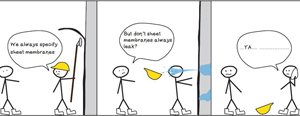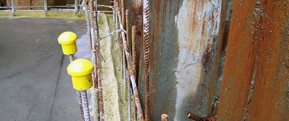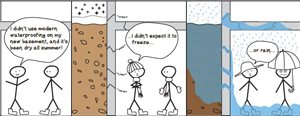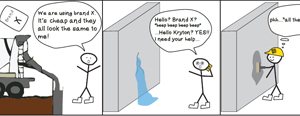Category
- Concrete Technology

When a project is born on paper, it feels like a work of art. Flawless, and significant, it is an exciting day when the ground is finally broken. But then, like any concept put to reality, problems come up that could not be anticipated.
Failure is the greatest teacher. But if failure is not an option for a project, contractors look to gain the most valuable insight from previous projects or from the experiences of other contractors.
The most important part of a structure is its foundation. It doesn’t matter how elaborate a building such as a condominium is on the surface – if the foundation is faulty due to water ingress or even has a tendency to flood, the units won’t sell. When it comes to waterproofing concrete in the below grade areas of a buildings foundation, it must be done right the first time.
Although external sheet membranes account for most of the concrete waterproofing in buildings today, the results are often less than perfect. What is the solution?
Adding Krystol Internal Membrane (KIM), a permanent crystalline admixture, directly to the concrete itself replaces sheet membranes, and is gaining momentum in many high-risk building projects around the world.
With all of the studies and technology available within the construction industry today, arming yourself with the very latest on the best solutions is the only way to ensure a projects true success. Here are some common ways that sheet membranes can impede the outcome of your below grade concrete project, and how using KIM can mitigate those same concerns:
 Damage to sheet membranes during installation, or improper installation
Damage to sheet membranes during installation, or improper installation
Backfilling can cause tears and other damage to sheet membrane, they are challenging to use in vertical applications and nearly impossible for blind wall applications. Sheets can also de-bond if: they are not promptly covered after installation; the top edges are not sealed; the primer is incorrectly applied, or if tie-holes are not flush with the concrete surface.
The Krystol Alternative
Contrary to the time consuming and finicky installation process associated with sheet membranes, adding the KIM admixture directly to the concrete itself makes the entire concrete slab itself waterproof.
 Limited access for inspection or repairs
Limited access for inspection or repairs
Many below-grade areas cannot be accessed if there is a leak, or inspected to ensure the membrane is sound. Performance and durability can also be issues. Sheet membrane waterproofing performance depends on surface adhesion and proper seam lapping. If these practices are not met with precision upon installation, water ingress is a high likelihood.
The Krystol Alternative
Another approach to blindside waterproofing is using KIM admixture to make the concrete itself waterproof. Adding KIM to the concrete itself saves a lot of time on the jobsite, as blind-side sheet membrane applications require specialized, flawless workmanship. Crystalline products, such as KIM, have been specified in thousands of blind-side and underslab work across North America and Europe with stellar results.
 Deterioration
Deterioration
Sheet membrane materials are strongest on the first day following installation, after which they gradually deteriorate. Often there is no way of inspecting the durability of older membranes, so the most common way to find out a membrane has failed, is when serious water damage has been detected.
The Krystol Alternative
When using KIM as the concrete waterproofing solution, once the concrete has cured, the crystalline chemicals sit dormant until another dose of water (such as through a new crack) causes the chemical reaction to begin again. The ability to reactivate in the presence of water gives Krystol-treated concrete the ability to “self-seal”. When cracks form due to curing shrinkage, settling, seismic activity, etc., water entering through them causes new crystals to form and grow, blocking and filling the cracks.
The most unique and effective feature is its ability to self-seal cracks, this can help to dramatically reduce the long-term maintenance and repair costs of a concrete structure.
Investing in a permanent concrete waterproofing solution makes sense.


 Damage to sheet membranes during installation, or improper installation
Damage to sheet membranes during installation, or improper installation Limited access for inspection or repairs
Limited access for inspection or repairs Deterioration
Deterioration


